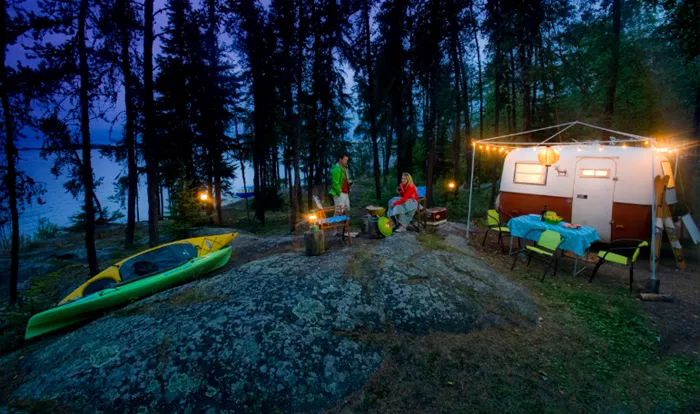Running an RV park can be a rewarding venture, but it comes with various costs. Understanding these costs is crucial for potential owners and operators. This article will break down the major expenses involved in running an RV park, from startup costs to ongoing operational expenses.
1. Startup Costs
Before opening an RV park, there are significant initial investments to consider. These costs vary based on location, size, and amenities offered.
Land Acquisition
The first step in starting an RV park is acquiring land. Prices vary greatly by region. In rural areas, land might cost less per acre than in popular tourist destinations. Consider these factors:
Location: Proximity to attractions or natural parks can increase land prices.
Zoning: Ensure the land is zoned for recreational use.
Site Development
Once land is acquired, site development begins. This includes:
Clearing and Grading: Preparing the land can cost between $1,000 and $5,000 per acre.
Utilities: Installing water, sewer, and electricity can be expensive. Expect to spend $10,000 to $30,000 depending on the site layout.
Roads and Parking Areas: Creating access roads and parking spaces may range from $5,000 to $20,000.
Permits and Licenses
Acquiring necessary permits and licenses is essential. Costs can include:
Business License: Varies by state and can cost between $50 and $500.
Building Permits: Costs depend on local regulations, ranging from $500 to several thousand dollars.
Initial Amenities
Offering amenities can attract guests. Consider these initial costs:
Restrooms and Showers: Building facilities can cost $10,000 to $50,000.
Laundry Facilities: Adding washers and dryers can be a $5,000 to $15,000 investment.
Recreational Areas: Pools, playgrounds, or picnic areas can add $10,000 to $100,000.
2. Ongoing Operational Expenses
Once the park is operational, various ongoing costs must be managed.
Staffing Costs
Hiring staff is essential for park operations. Depending on the size of the park, costs may include:
Manager Salary: A park manager might earn $30,000 to $60,000 annually.
Maintenance Staff: One or two maintenance workers could add another $25,000 to $50,000 in labor costs.
Utilities
Monthly utility costs are a significant part of running an RV park. These include:
Water and Sewer: Depending on usage, costs can range from $300 to $1,000 per month.
Electricity: Depending on the number of RVs, expect $500 to $2,000 monthly.
Internet: Offering Wi-Fi can cost $100 to $500 monthly.
Insurance
Insurance is crucial for protecting your investment. Types of insurance include:
Liability Insurance: Protects against accidents; costs range from $1,000 to $5,000 annually.
Property Insurance: Covers damage to facilities; costs may be $2,000 to $10,000 yearly.
Maintenance Costs
Regular maintenance is vital for guest satisfaction. Consider these expenses:
Landscaping: Maintaining lawns and gardens can cost $200 to $1,000 monthly.
Repairs: Expect to spend $500 to $2,000 per month on repairs and upkeep.
Marketing and Advertising
To attract guests, ongoing marketing efforts are necessary. Costs can include:
Website Development: Creating a user-friendly website may cost $1,000 to $5,000.
Online Advertising: Budgeting $500 to $2,000 monthly for ads can help reach potential visitors.
3. Seasonal Considerations
Many RV parks experience seasonal fluctuations in occupancy. Costs can vary based on the season.
Winterization Costs
In colder climates, parks may need to winterize facilities. This includes:
Shutting Down Water Systems: Costs for winterization can be $500 to $2,000.
Heater Installation: Adding heaters in facilities can cost $1,000 to $5,000.
Seasonal Staffing
Hiring seasonal staff during peak months can increase costs. Plan for:
Temporary Workers: Pay $12 to $20 per hour for seasonal help.
Training: Investing in training can be another $1,000 to $3,000 annually.
4. Revenue Generation
Understanding costs is essential, but generating revenue is equally important. Here are some ways to increase income.
Site Fees
Charging for RV sites is the primary revenue source. Consider:
Nightly Rates: Typical rates range from $30 to $100 per night.
Monthly Rates: Offering discounts for monthly stays can attract long-term guests.
Additional Services
Enhancing guest experience can increase revenue. Consider these options:
Camp Store: Selling essentials can generate an additional $1,000 to $5,000 monthly.
Event Hosting: Organizing events can attract more visitors and generate income.
Partnerships
Building partnerships can create additional revenue streams. Consider:
Local Businesses: Collaborating with nearby attractions for discounts can enhance guest experience.
Tour Companies: Partnering with tour companies can offer packages that benefit both parties.
5. Financial Planning
Careful financial planning is essential for success. Key considerations include:
Budgeting
Create a detailed budget to manage costs effectively. This should include:
Projected Income: Estimate based on site fees and additional services.
Operating Expenses: Account for all ongoing costs.
Contingency Fund
Setting aside funds for unexpected expenses is wise. Aim for 10% to 20% of your annual budget for emergencies.
Regular Financial Reviews
Conduct regular financial reviews to ensure your park remains profitable. This involves:
Monitoring Expenses: Keep track of all costs to identify areas for savings.
Adjusting Rates: Evaluate pricing based on demand and occupancy rates.
Conclusion
Running an RV park involves significant startup and ongoing costs. From land acquisition to staffing and maintenance, understanding these expenses is crucial for successful management. However, with careful planning and effective revenue generation strategies, an RV park can be a profitable business venture. By keeping a close eye on finances and continually improving guest experiences, park owners can ensure long-term success.
Related topics:
- Is It Expensive to Insure a Campervan?
- The 5 Best Caravans in Hervey Bay
- How Much Are Seasonal RV Sites?

